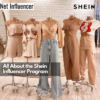Platform
Bluesky’s Decentralized Dream And How It’s Reshaping The Social Media Ecosystem
Rose Wang has a radical proposition for the millions of creators heading to VidCon this year: What if you never had to start over again? What if the audience you’ve painstakingly built, the content you’ve crafted, and the community you’ve nurtured actually belonged to you—not to a Silicon Valley boardroom that could vaporize your livelihood with an algorithm tweak?
As COO of Bluesky, Rose isn’t just asking these questions—she’s providing the answers. In just 16 months, the social network has attracted 36 million users by promising something that sounds almost quaint in 2025: digital ownership. But this isn’t some crypto fantasy about NFTs and blockchain. It’s a fundamental re-architecting of how social media works, and it’s catching fire at precisely the moment when creators are realizing they’ve been digital sharecroppers all along.
“Bluesky is not just another app. It’s a completely new way for social to work,” Rose explains, her voice carrying the conviction of someone who has spent years watching creators struggle under the weight of algorithmic whims and platform monopolies. “It’s a new social paradigm.”
A Quick History Lesson
To understand Bluesky’s approach, Rose reaches back to the early days of the Internet, drawing a parallel that resonates with anyone who remembers the sound of dial-up modems.
“Back when we started the Internet, there was AOL, which was like America Online,” she recalls. “You got a disc in the mail, and you would have to upload it to your computer. And essentially, then you would get Internet that’s in a box that AOL created.”
But while most of America was trapped in AOL’s walled garden, a group of “nerds”—as Rose affectionately calls them—were building something different on HTTP. They created blogs, RSS feeds, and forums where smaller communities could flourish without asking permission from a parent company to make changes.
“What ended up happening was very quickly most users left AOL and came to this new HTTP world that we now know and all use,” says Rose. The comparison isn’t accidental. In her view, today’s social media platforms—Twitter, TikTok, Facebook—are the new AOLs: closed, controlled environments where a small group of people decide what content gets distributed and what gets buried.
Bluesky, in this analogy, is both the HTTP protocol and the first browser built on top of it—a foundational technology that enables others to build without permission.
The Broken Value Equation
For creators attending VidCon, Rose’s message hits particularly close to home. She doesn’t mince words about the current state of the creator economy.
“There’s this really strange world where the people who are doing the work, making the funny posts, making the funny videos, they post that on a platform and then what ends up happening is advertisers then pay the platform for being able to target certain people off of that content,” she explains. “But the content creator who made that post that gets a lot of reach doesn’t take home the bigger slice of the pie; the platform does.”
This fundamental misalignment—where value creation and value capture are divorced—is what Bluesky aims to fix. The platform’s approach is radically different: content creators should not only take home most of the money but also decide where their content goes.
“Right now, when you make a post, you can’t guarantee that it will reach your audience. You hope and pray that the platform delivers it to your audience,” Rose says. “And as soon as they change the algorithm overnight, you basically have to change your formula of how you create content.”
The Power of Feeds
Bluesky’s solution centers on what they call “feeds”—customizable algorithms that users can create, share, and choose from. It’s a concept that transforms the social media experience from a one-size-fits-all broadcast to a multi-dimensional ecosystem.
“It’s basically like we exist in a world with two TV stations, and we should exist in worlds with lots of YouTube channels,” Rose illustrates. “And somehow we’re kind of stuck in the two TV stations on social.”
The platform currently hosts over 100,000 user-created feeds, ranging from niche communities like Black Sky (with nearly a million users) to utility feeds like Gift Links, which aggregates gift-linked articles from major publications—essentially creating an Apple News replacement within Bluesky.
For publishers like Wired, The Atlantic, and The Boston Globe, this approach is already paying dividends. “These publishers are coming to us not because they love just the idea of Bluesky, but because we’re sending them more traffic and more paying subscribers than other platforms,” Rose reveals.
The secret? Bluesky doesn’t downrank links—a practice common on other platforms that trap users within their ecosystems to maximize ad revenue. “If you post a link that takes people off the platform, that post will get less engagement than posts without links,” Rose says about traditional platforms. “We look at that model and we say that makes no sense.”
Building Community Through Controlled Chaos
Bluesky’s growth story reads like a masterclass in organic community building. The platform’s initial invite-code system, which Rose admits they “lucked into,” created a natural community-first growth pattern.
“The first 10,000 were like some wrestlers, Brazilian Taylor Swift fans, Substack writers,” she recalls. “There are just people who would get invite codes and send them to their friends.”
This approach led to unexpected viral moments, such as the infamous “Hell Threads”—a bug-turned-feature where users would become stuck in notification loops within specific threads, resulting in spontaneous community formation. “We’ve heard that they’ve met in person, they’ve gotten married,” says Rose of the connections formed through these chaotic digital gatherings.
Even celebrities like Lizzo have found the app’s approach refreshing. “Bluesky is one of her most used platforms because she feels like she can actually talk to real fans here and really understand what they’re going through,” Rose notes.
A Woman’s Perspective on Platform Safety
As a woman leading a social media platform, Rose brings a perspective often missing from Silicon Valley boardrooms.
“I’ve experienced what it’s like to be on the Internet as a woman for many decades. And I know that for me, I’m not going to go to a platform where I can’t block someone if they’re harassing me,” she says. This personal experience has led the platform to prioritize safety features, even when advisors argued that it might limit growth.
“If I, as the COO, am still getting very questionable DMs in my Bluesky inbox, I can’t imagine what other women are getting,” Rose admitted. Her stance is clear: safety isn’t a feature to be added later—it’s foundational.
The Last Platform You’ll Ever Have to Start Over From
Perhaps Bluesky’s most radical proposition is also its simplest: users should own their digital content. In practical terms, this means that if the social network ever fails to serve its users—or if it shuts down entirely—users can take their entire presence, including their audience and content, to another compatible platform.
“Bluesky is the last place you’ll ever have to start over from,” Rose promises. “So many creators are paranoid about having to go create their identity, squat my handle, and rebuild. And basically, they’re at platform risk if the platform changes the algorithm or decides that they’re no longer able to have an account.”
This isn’t just theoretical. Other apps like Graysky and Flashes are already building on Bluesky’s protocol, creating an ecosystem where users truly have choices.
Monetization Without Exploitation
While Bluesky hasn’t yet introduced monetization features—the platform is only 16 months old—Rose’s vision for creator economics is clear. Inspired by platforms like Twitch, Bluesky sees itself as facilitating transactions rather than controlling them.
“We see the platform more as a transaction. We’re just a percentage of the value that we’re providing,” she explains. “We’re just helping you get to your audience, but at the end of the day, you are creating most of the value.”
From 25 People to a Global Movement
Operating with just 25 employees across four continents, Bluesky’s small team has achieved what many well-funded startups fail to accomplish: genuine user love and organic growth. Rose attributes this to the team’s culture—they’re not just building Bluesky; they’re active users who post regularly and engage with the community.
“The communities that are formed are in some ways a reflection of the strong center of people of the community,” Rose reflects. “One of the coolest things about Bluesky is that the people who started the company are posters themselves.”
As creators gather at VidCon to discuss the future of content creation, Rose’s message is two-pronged – one, the current system is broken, with platforms extracting value from creators while controlling their reach and audience; and two, in Bluesky, creators can join a movement that’s building something fundamentally different.
In a creator economy increasingly defined by platform risk and algorithmic anxiety, Bluesky’s promise of ownership and control offers a refreshing perspective. As Rose puts it, “This is where the hot party is, where all the people are creating the fun stuff.”





















